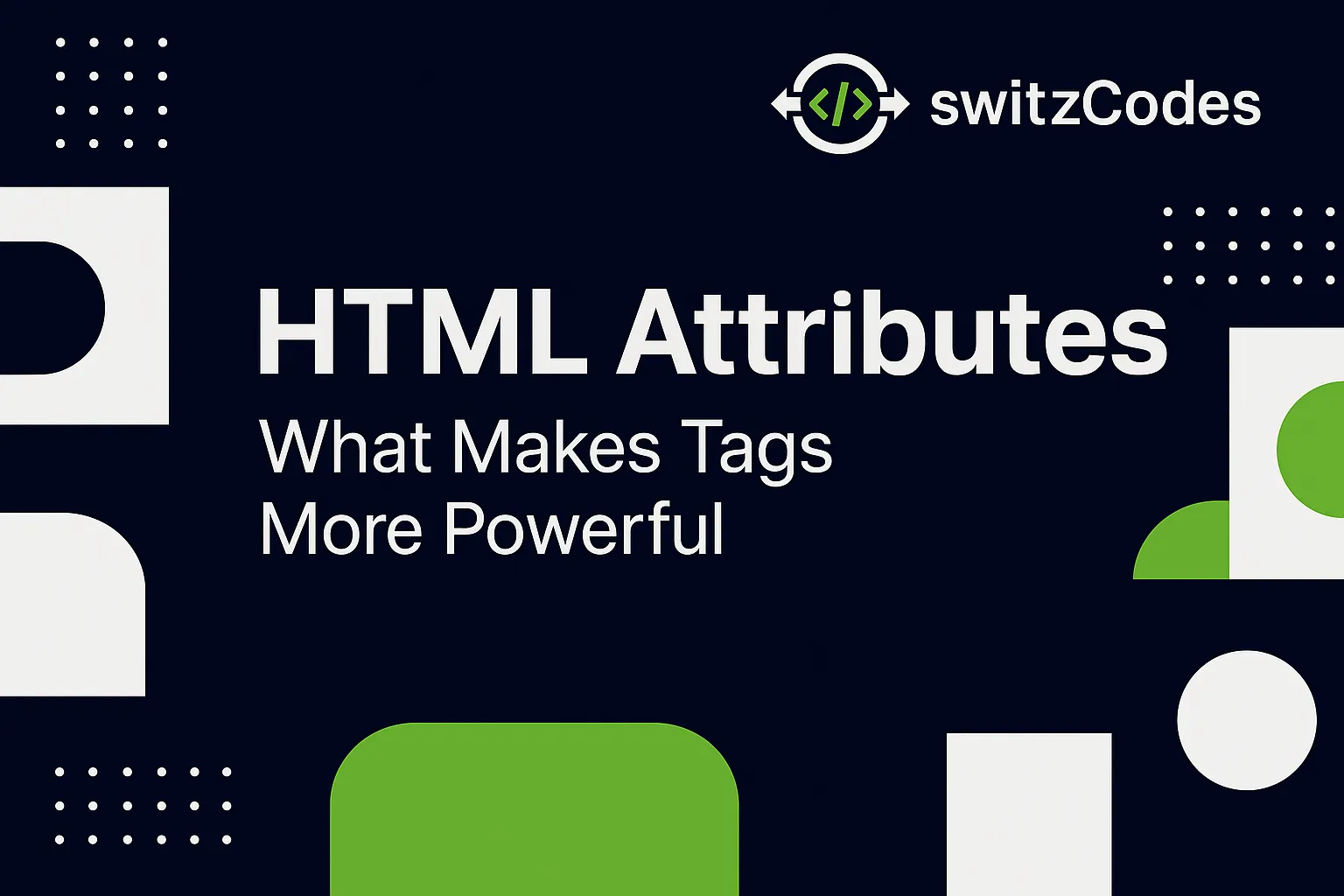
📄 HTML Attributes – What Makes Tags More Powerful
📅 September 20, 2025
✍️ By Evans
Hey friends! 👋
When I first started with HTML, I thought tags were everything. You know — <p>, <h1>, <img>, and all that. But soon, I discovered something that makes those tags way more powerful: Attributes.
Attributes are like the extra settings or instructions that change how a tag behaves. Think of them as tiny helpers that give more meaning and control to your HTML.
Let's break it down. 👇
⚙️ What Are Attributes?
Attributes are placed inside HTML tags and usually come in name-value pairs like this:
<tagname attribute="value">Content</tagname>
Example:
<a href="https://switzcodes.com">Visit SwitzCodes</a>
Here,
- href is the attribute name, and
- "https://switzcodes.com" is its value.
This simple attribute tells the browser where the link should go when clicked.
🧱 Some Common HTML Attributes I’ve Learned
Here are a few I use a lot:
🔗 href
Used in <a> tags to specify the link destination.
<a href="https://switzcodes.com"<Go to my blog</a>
🖼️ src
Used in <img> or <script> tags to define the file source.
<img src="images/profile.png" alt="My profile photo">
🧠 alt
Used with images — it shows text if the image doesn't load (and helps with accessibility).
<img src="logo.png" alt="SwitzCodes Logo">
🆔 id
Gives an element a unique identity. Useful for styling or linking to that element later.
<p id="intro">Welcome to my portfolio!</p>
🏷️ class
Used to group elements with similar styles.
<p class="highlight">This paragraph is styled differently.</p>
🎨 style
Lets you apply inline CSS directly to an element.
<h2 style="color: blue;">Hello World!</h2>
💬 title
Displays a small tooltip when you hover over the element.
<p title="This is a tooltip">Hover over me!</p>
💡 Why Attributes Matter
When I first understood attributes, I realized — they're what make HTML flexible and customizable.
Without attributes, everything would look and behave the same.
With them, I can:
- Link pages together
- Add images
- Style specific elements
- Control layout and accessibility
Basically, attributes bring life and control to HTML.
🧠 Quick Example I Tried
Here's a simple mini page I practiced with:
<!DOCTYPE html>
<html>
<head>
<title>HTML Attributes Example</title>
</head>
<body>
<h1 class="main-heading" style="color: teal;">Hello, World!</h1>
<p id="intro" title="Welcome note">Welcome to my learning journey on SwitzCodes.</p>
<a href="https://switzcodes.com" target="_blank">Visit my blog</a>
</body>
</html>
It's a small example — but it shows how attributes change everything!
💬 Some Beginner Tips
- Always wrap attribute values in quotes ("").
- Use id for unique elements and class for reusable ones.
- Avoid too many inline style attributes — external CSS is cleaner.
- Remember: attributes make your HTML smarter, not just longer. 😅
🎯 What I Learned
Learning attributes gave me a new appreciation for how websites work.
Now, I can control not just what’s on the page, but how it looks and behaves.
It’s like I’ve unlocked a second layer of HTML. 💪
👉 What’s Next?
Next up, I’ll be exploring HTML Semantic Tags, where I’ll learn how tags like <header>, <main>, and <footer> help make web pages more organized and accessible.
See you in the next post! 🙌
— Evans 💻
